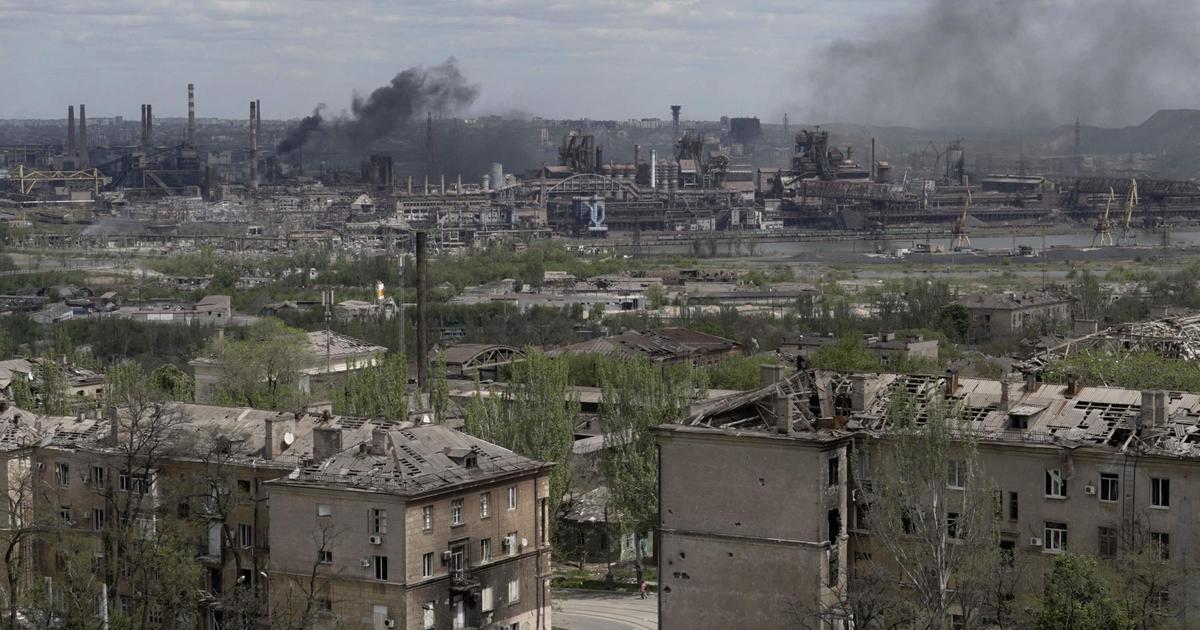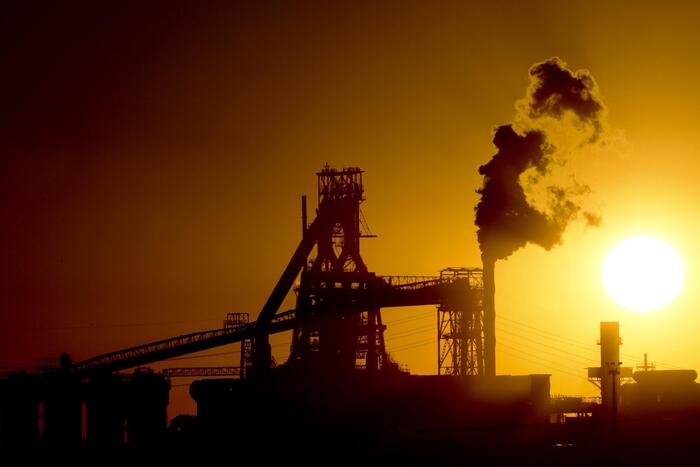The Ukrainian resistance has lost control of Mariupol day by day due to the attack of the Russian forces.
The seaside city on the Sea of Azov represents a land bridge linking Crimea, which Russia annexed in 2014, and the Donetsk and Luhansk regions targeted by Putin.
After almost two months of bombing, the city of 430,000 inhabitants "no longer exists," Ukraine's Foreign Minister Dmitro Kuleba said on Monday.
Zone of control or Russian advance
disputed areas
Mariupol
Azovstal
3km
March 24
.
After several days of siege, the Russians enter the city.
Ukraine also confirms for the first time that Kremlin troops control part of the city center.
Mariupol
Azovstal
3km
March 30
.
The Russians settle in the center of the city and claim to control a large part of the Azovstal steel mill.
Several battalions of Chechen soldiers are taking part in the operation, entering from the east.
Mariupol
Azovstal
3km
April 10
.
The Russians split Mariupol into two and cut off the Ukrainian troops: one part near the main port in the southwest of the city;
the rest at the Azovstal steelworks.
Mariupol
Azovstal
3km
April 18
.
Russian troops surround the steel mill and attack it with heavy artillery, while the Ukrainian army attempts a counterattack.
If the Russians took over Azovstal, they would control the entire city.
The fierce siege by Kremlin troops put the town in a critical situation weeks ago, and the attacks have not stopped since then.
The following map shows the most significant damage to infrastructure and buildings in Mariupol since the end of February, according to an analysis by Masae Analitics of European satellite images.
The more intense the red color on the map, the more destruction an area has suffered.
Damaged or destroyed buildings
Mariupol
Steelworks
Azovstal
Sea of Azov
5km
Infrastructure destroyed between February 20 and April 5 according to Sentinel-1A satellite images analyzed by Masae Analytics.
Damaged or destroyed buildings
Mariupol
Steelworks
Azovstal
Sea of Azov
5km
Infrastructure destroyed between February 20 and April 5 according to Sentinel-1A satellite images analyzed by Masae Analytics.
Damaged or destroyed buildings
Mariupol
Steelworks
Azovstal
Sea of Azov
5km
Infrastructure destroyed between February 20 and April 5 according to Sentinel-1A satellite images analyzed by Masae Analytics.
Damaged or destroyed buildings
Mariupol
Steelworks
Azovstal
Sea of Azov
5km
Infrastructure destroyed between February 20 and April 5 according to Sentinel-1A satellite images analyzed by Masae Analytics.
Damage is identified by comparing images taken before the war (February 20) and the most recent (April 5).
As Masae explains, "in the context of an armed conflict, these changes most likely imply destruction."
In this analysis, the Azovstal steelworks, one of the largest in Europe, stands out for the concentration of damage.
It is an industrial complex in the southeast of the city, near the port, which extends over 11 square kilometers in an intricate network of ships, train tracks and underground tunnels where Ukrainian troops and civilians fighting and surviving the incessant bombardment.
According to the country's authorities, there would be around a thousand civilians at the plant, including women and children.
"It's such a big space with so many buildings that the Russians simply won't be able to find [Ukrainian troops]," military analyst Oleh Zhdanov told Reuters from kyiv.
The facility is the focus of continuous heavy artillery attacks in recent days.
Mariupol
Steelworks
Azovstal
EXTENSION
Sea of Azov
500m
Steelworks
Azovstal
Impacts
artillery
Hidden in the tunnels and the network of bombed ships are the last Ukrainian soldiers and about a thousand civilians.
Satellite image from last Saturday, April 9, showing dozens of artillery hits at the Azovstal steel factory.
|
Maxar
Mariupol
Steelworks
Azovstal
EXTENSION
Sea of Azov
500m
Infrastructure destroyed between February 20 and April 5 according to Sentinel-1A satellite images analyzed by Masae Analytics.
Steelworks
Azovstal
Impacts
artillery
Hidden in the tunnels and the network of bombed ships are the last Ukrainian soldiers and about a thousand civilians.
Satellite image from last Saturday, April 9, showing dozens of artillery hits at the Azovstal steel factory.
|
Maxar
Mariupol
Steelworks
Azovstal
EXTENSION
Sea of Azov
500m
Infrastructure destroyed between February 20 and April 5 according to Sentinel-1A satellite images analyzed by Masae Analytics.
Hidden in the tunnels and the network of bombed ships are the last Ukrainian soldiers and about a thousand civilians.
Steelworks
Azovstal
Impacts
artillery
Satellite image from last Saturday, April 9, showing dozens of artillery hits at the Azovstal steel factory.
|
Maxar
Mariupol
Steelworks
Azovstal
EXTENSION
Sea of Azov
500m
Infrastructure destroyed between February 20 and April 5 according to Sentinel-1A satellite images
analyzed by Masae Analytics.
Steelworks
Azovstal
Hidden in the tunnels and the network of bombed ships are the last Ukrainian soldiers and about a thousand civilians.
Impacts
artillery
Satellite image from last Saturday, April 9, showing dozens of artillery hits at the Azovstal steel factory.
|
Maxar
This is not the first time that a war has interrupted Azovstal's activity.
It was built by the Soviet Union in the early 1930s, but ceased to function with the Nazi occupation during World War II.
After the reconstruction, it became a factory capable of producing more than six million tons of steel per year, equivalent to what all the plants of the largest company in the sector produce in Spain: Arcelormittal.
02:46
This is the factory in which the last Ukrainian combatants of Mariupol resist
What we know about Azovstal, the resistance stronghold of Mariupol.
The number of Ukrainian soldiers sheltering in the tunnels of the steelworks is difficult to quantify.
The siege has interrupted a large part of communications with the outside world and the local authorities are wary of giving information about the situation in this bastion.
It is estimated that in recent days around 100,000 civilians remain in the entire city, a quarter of its population before the war.
The main international analysts of the conflict point out that it is a matter of days before the Azovstal complex falls and, with it, the city of Mariupol.
This is how Kuleba, the foreign minister, summed it up: “What remains of the Ukrainian troops and a large group of civilians are basically surrounded by Russian forces.
They continue their fight, but it seems, from the way the Russians are behaving,
Follow all the international information on
and
, or in
our weekly newsletter
.









/cloudfront-eu-central-1.images.arcpublishing.com/prisa/KMEYMJKESBAZBE4MRBAM4TGHIQ.jpg)


/cloudfront-eu-central-1.images.arcpublishing.com/prisa/EXJQILQR5QI7OMVRTERD7AEZAU.jpg)
